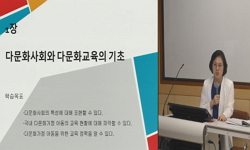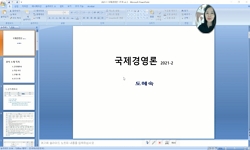세계 곳곳에 퍼져 있는 광범위한 화교 조직에 대한 연구에 비해 한국화교의 정체성 및 그들의 정착과정을 통한 연구는 미흡한 실정이다. 본 연구에서는 19세기 후반부터 이주해온 한국화교...
http://chineseinput.net/에서 pinyin(병음)방식으로 중국어를 변환할 수 있습니다.
변환된 중국어를 복사하여 사용하시면 됩니다.
- 中文 을 입력하시려면 zhongwen을 입력하시고 space를누르시면됩니다.
- 北京 을 입력하시려면 beijing을 입력하시고 space를 누르시면 됩니다.
https://www.riss.kr/link?id=T14752202
- 저자
-
발행사항
서울: 경기대학교 관광전문대학원, 2018
-
학위논문사항
학위논문(석사) -- 경기대학교 관광전문대학원 , 외식산업경영학과 , 2018. 2
-
발행연도
2018
-
작성언어
한국어
-
주제어
화교 ; 한국식 중화요리 ; 문화변용 ; 화교조리사심층인터뷰 ; 현지화
-
발행국(도시)
서울
-
기타서명
(The) Localization of Korean-Style Chinese Food through an In-Depth Interview with Overseas Chinese Cooks
-
형태사항
v, 51 p.: 삽도; 26 cm.
-
일반주기명
지도교수:한경수
경기대학교 논문은 저작권에 의해 보호받습니다.
참고문헌 : p.47-49 - 소장기관
-
0
상세조회 -
0
다운로드
부가정보
국문 초록 (Abstract)
세계 곳곳에 퍼져 있는 광범위한 화교 조직에 대한 연구에 비해 한국화교의 정체성 및 그들의 정착과정을 통한 연구는 미흡한 실정이다. 본 연구에서는 19세기 후반부터 이주해온 한국화교의 과정을 토대로 한국에서 현지화 과정을 거쳐 토착화 된 한국식 중화요리에 정착 과정에 대해 알아 보고자 한다. 중국요리와 중화요리의 모호한 혼용에 대해 이론을 토대로 한국식 중화요리라는 형태로 자리잡기 까지의 과정을 설명하고, 한국문화에서 적응하며 중화요리의 현지화를 체득한 ‘구화교’ 출신의 조리사를 대상으로 심층면접 인터뷰를 실시한 후 Colaizzi의 분석방법을 적용하여 내용을 분석하였다. 2017년 6월~9월에 걸쳐 25∼30년 이상 근무 경력을 가지고 있는 화교 2세대로서 현재 특급호텔 중식당에서 근무 중이거나 근무했던 경력이 있는 조리사들이다. Colaizzi의 분석방법은 참여자로부터 기술된 내용에서 의미 있는 문장이나 어구를 추출하고, 이를 기반으로 일반적이며 추상적인 진술을 만들어 의미를 구성하고 주제묶음으로 범주화 한 후 경험의 본질적 구조를 기술하는 방법으로서 연구 결과를 5개의 범주로 구성하여 기록하였다. 한국화교의 정착과 함께 발전해온 중화요리의 정착과 발전과정을 문헌 자료를 통해 연구해보고, 다년간의 경험을 통해 체득한 구화교 출신의 조리사들의 인터뷰 내용을 분석해 봄으로서, 현대와 미래의 한국식 중화요리의 나아갈 길을 염두해 보고자 하였다.
다국어 초록 (Multilingual Abstract)
The research efforts for the identity and settlement process of the overseas Chinese in South Korea have been poor compared with the investigation into the broad structure of the overseas Chinese all around the world. This study set out to investigate...
The research efforts for the identity and settlement process of the overseas Chinese in South Korea have been poor compared with the investigation into the broad structure of the overseas Chinese all around the world. This study set out to investigate the settlement process of Korean-style Chinese food that had been naturalized through the localization process in South Korea based on the overseas Chinese of South Korea who started to move into the nation in the second half of the 19th century. The study explained the process of Chinese food settling down as Korean-style Chinese food based on the theories about the ambiguous mixed uses of terms including Chinese cuisine and Zhonghua cuisine , both of which mean Chinese food in Korean. An in-depth interview was conducted with cooks that were "old overseas Chinese" and localized Chinese food by adjusting to the South Korean culture. Their interviews were analyzed in the Colaizzi method. The subjects were second-generation overseas Chinese that had a career of 25~30 years and were currently working at a Chinese restaurant of a five-star hotel or used to work there. The interviews lasted from June to September, 2017. The Colaizzi method extracts meaningful sentences or phrases from the participants' interviews, makes general and abstract statements based on them, organizes their meanings, categorizes them into topic clusters, and describes the essential structure of experiences. The findings were organized and recorded in five categories. The present study explored the paths of Korean-style Chinese food today and tomorrow by investigating the settlement and development process of Chinese food that accompanied the settlement and development of the overseas Chinese in South Korea based on literature materials and analyzing the content of interviews with cooks that were old overseas Chinese and learned by experiences over many years.
목차 (Table of Contents)
- 제 1 장 서 론 1
- 제 2 장 이론적 배경 3
- 제 1 절 화교에 관한 이론적 고찰 3
- 제 1 항 화교에 대한 선행연구 3
- 제 1 장 서 론 1
- 제 2 장 이론적 배경 3
- 제 1 절 화교에 관한 이론적 고찰 3
- 제 1 항 화교에 대한 선행연구 3
- 제 2 항 화교의 정의 4
- 제 3 항 화교의 역사 및 활동 내용 4
- 제 2 절 한국 사회에서 화교의 등장 5
- 제 1 항 한국화교의 정의 5
- 제 3 절 한국 화교의 역사와 정착과정 7
- 제 1 항 한국화교의 역사 및 정착과정 7
- 제 2 항 한국화교 정착의 한계점 9
- 제 4 절 한국식 중화요리에 대한 선행연구 9
- 제 1 항 중화요리에 대한 정의 10
- 제 2 항 한국식 중화요리의 정의 10
- 제 3 항 한국식 중화요리의 특성 및 발달과정 11
- 제 4 항 한국식 중화요리의 저변확대 13
- 제 3 장 연구방법 17
- 제 1 절 연구참여자 선정에 대한 논의 17
- 제 2 절 연구방법 17
- 제 3 절 자료의 분석 19
- 제 4 절 연구 대상자 및 심층면접항목 20
- 제 4 장 연구결과 22
- 제 1 절 한국식 중화요리에 대한 경험 22
- 제 2 절 한국식 중화요리의 변화요인 24
- 제 3 절 한국식 중화요리의 현지화에 대한 인식 29
- 제 4 절 한국식 중화요리의 현지화에 따른 문제점 33
- 제 5 절 한국식 중화요리의 향후 발전 방향 38
- 제 5 장 결론 및 제언 44
- 제 1 절 요약 44
- 제 1 항 학문적 시사점 45
- 제 2 항 실용적 시사점 45
- 참고문헌 47
- Abstract 50











